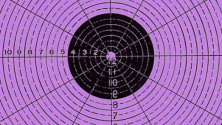Congress is beginning to focus on the abusive use of patents by Patent Assertion Entities (PAEs) with new legislative proposals.
House Judiciary Committee Chairman Bob Goodlatte and a wide variety of witnesses highlighted the PAE problem in hearings last winter. Senate Judiciary Committee Chairman Patrick Leahy is working with Chairman Goodlatte and committed to working in a bicameral and bipartisan way to counter what they term 'patent trolling,' which "casts a pall on the system because it hinders innovation."
And earlier this month, the White House reiterated its concerns that there has been "an explosion of abusive patent litigation designed not to reward innovation and enforce intellectual property, but to threaten companies in order to extract settlements based on questionable claims." It released a report, Patent Assertion and U.S. Innovation, detailing the challenges that PAEs and a broken patent system pose to innovators. The White House also announced a set of legislative priorities and executive branch actions on this front.
Taken together, the continued attention and hard work by key leaders in Congress on this issue and the shared concerns and priorities emanating from the White House are very hopeful signs that legislative progress can be made.
The legislative landscape
A number of legislative proposals have now been advanced. Some are at a public draft stage, while some have been formally introduced. Others are 'forthcoming'. The key ones under discussion appear to be the following:
House Judiciary Discussion Draft. Released by House Judiciary Committee Chairman Goodlatte just before Memorial Day, the proposal includes provisions on cost and fee shifting (i.e., changing the economics of litigation that currently benefit PAEs); transparency of patent ownership; protections for end users; makes permanent the 'covered business method' program (Section 18 of the American Invents Act [AIA]); steps that could lead to greater clarity of pleadings and reduce discovery burdens; and various other provisions. Chairman Goodlatte has been a consistent voice for reform of the patent system. This draft is a good 'first step' to get feedback and scope the issues. As noted below, there are several improvements that would make the bill more meaningful to mitigate the significant impact of PAE’s on American competitiveness, which "cost our economy billions of dollars each year."
S. 1013, the "Patent Abuse Reduction Act." Introduced by Sen. Cornyn, the bill thoughtfully addresses the issues of cost/fee-shifting; transparency of patent ownership; clarifying pleading standards; the economic imbalance of PAE discovery tactics; and joinder of interested parties. The bill can be expected to be a key proposal when the Senate Judiciary Committee begins its considerations. It has received positive reactions from key voices in the tech and user community.
S. 886, the "Patent Quality Improvement Act of 2013." Authored by Sen. Charles Schumer, the bill enhances the novel transitional program established in Section 18 of the AIA to give parties an alternative to litigation for business method patents involving a 'financial product.' Sen. Schumer’s bill makes the program permanent, and expands it beyond its current limited scope of a 'financial product.'
Senate Judiciary Proposal. This is forthcoming from Chairman Leahy, who is working with others on both sides of the aisle on the Judiciary Committee. Whether its release or introduction occurs before the Senate finishes consideration of the immigration bill (which is a priority of the Judiciary Committee) remains to be seen.
Many of these proposals were included (or tacitly endorsed) in the White House’s priorities on June 4.
Comparing the provisions
Cost/fee-shifting
The asymmetrical costs and risks of litigation are disproportionately and unfairly borne by defendants targeted by PAEs, who, unlike PAEs, are creating jobs, engaging in innovation, and contributing to the economy. A successful defendant against a PAE almost never recovers its costs, because the current Section 285 of the Patent Act imposes a high hurdle. The House Judiciary draft and the Cornyn bill seek to address the imbalance, in different ways.
The House draft simply removes the current Patent Act threshold of awarding costs 'in exceptional circumstances,' leaving its utility entirely to judicial discretion. In some jurisdictions, this could work well; in others, it is unlikely to change the fundamental asymmetry that benefits PAEs.
The Cornyn bill reverses the current statutory presumption, providing that reasonable costs and expenses, including attorneys' fees, will be awarded unless the court finds it unjust or the non-prevailing party’s position was objectively reasonable and substantially justified. (Note that this is an improvement over the current phrasing of Section 285, which only provides for 'easonable attorney fees.') Because PAEs leverage high attorneys' fees and costs related to experts and discovery activities to extract settlement regardless of the objective merits of their positions, the approach laid out by Sen. Cornyn specifically addresses their conduct, while not affecting mainstream patent infringement litigation. Moreover, this bill recognizes that many PAEs operate through shell companies: it makes the reasonable costs and expenses recoverable against any interested party in the event the non-prevailing party has empty pockets.
Cost and fee-shifting is front and center, as it should be. It is encouraging to see the key bills addressing the lack of a level playing field that currently exists.
Claim specificity
Both the House Judiciary draft and the Cornyn bill recognize that PAEs have abused the litigation system by making vague and unspecific claims, which promote costly fishing expeditions. As Chairman Goodlatte observed earlier this year, "PAEs often times acquire weak or poorly-granted patents, and proceed to send blanket demand letters or file numerous patent infringement lawsuits against American businesses with the hopes of securing a quick payday."
The two bills include different provisions, which are targeted at the same outcome. The House Judiciary draft provides that the Supreme Court may create a new Form 18 setting out model patent infringement allegations that, at a minimum, notify accused infringers of the asserted claim or claims, the products or services accused of infringement, and the plaintiff’s theory for how each accused product or service meets each limitation of each asserted claim. While this is positive, unfortunately there is no time line provided in the House Judiciary draft for the Supreme Court to act. Moreover, use of such Forms of the Federal Rules of Civil Procedure by the courts is discretionary, not mandatory.
The Cornyn bill requires modification of Form 18 within 12 months of the bill becoming law. Moreover, it statutorily prescribes what a patent infringement complaint must identify, including: not merely the asserted claim(s), but more particularly the "accused instrumentality (by model number)" for each asserted claim; element-by-element claim chart(s) for each accused instrumentality "with detailed specificity, how the terms in each asserted claim... correspond to the functionality of the accused instrumentality"; and for each claim alleged to be indirectly infringed, a description of (a) the direct infringement, (b) any person alleged to be a direct infringer, and (c) the acts of the alleged indirect infringer that contribute to or induce the direct infringement.
The claim chart requirement, in particular, would be an important step to combat PAE strategies and reduce the cost of pre-trial discovery. The Cornyn approach of providing action through legislative changes would be more certain to address PAE abuse.
Reducing PAE abuse in discovery
PAEs use the discovery process to magnify the costs associated with patent litigation abuse, seeking discovery of every electronic document that might touch upon the alleged claims, by any person inside the defendant’s operations. This can involve huge quantities of documents and cost millions of dollars to produce. PAEs often bring cases in jurisdictions that allow this type of expensive discovery.
Both the House Judiciary draft and the Cornyn bill address the issue, but in different ways. The former requires the Judicial Conference, not later than 6 months after the date the bill becomes law, to develop specific recommendations for rules and procedures regarding (a) discovery of "core documentary evidence," (b) additional discovery, and (c) discovery sequence and scope to address the asymmetries in discovery burdens and costs in any civil action arising under any Act of Congress relating to patents. The House Judiciary draft stops short of requiring any court to actually implement any recommendations developed by the Judicial Conference
The Cornyn bill achieves a similar goal, but specifies through legislative change (and not at the discretion of the Judicial Conference) how the parties will address discovery of “core documentary evidence." As a significant step (perhaps most significantly), the Cornyn bill stays discovery until a claim construction ruling is made (a step that undermines abusive PAE tactics), and provides that a party seeking discovery broader than core documentary evidence shall bear the costs (again, addressing the asymmetry of litigation with PAEs). Both bills appropriately exclude computer code and electronic communications (which have been abused in PAE-initiated litigation).
Protecting downstream users
PAEs have turned their sights on end users, many of whom are mainstream enterprises, such as retailers, grocers and restaurants (just to cite a few examples). As Janet L. Dhillon, Executive Vice President, General Counsel of retailer JCPenney, testified earlier this year, when she joined the company 4 years ago, JCPenney had no patent cases. Since that time, however, "the company has had to defend or settle over two-dozen patent infringement lawsuits that have nothing to do with the products JCPenney actually sells." And that doesn’t include the claims that the retailer has settled, simply because the cost of defending themselves couldn’t be justified. Her experience is replicated through hundreds, if not thousands, of similar mainstream companies.
The House Judiciary draft includes solid provisions that would allow a company (a "covered manufacturer") whose product is alleged to be infringed in a suit against a downstream user to intervene or stay the case against the end user and seek resolution of the PAE’s claim directly. It allows the covered manufacturer to file a motion for Directed Judgment in an appropriate forum.
The Cornyn bill does not include provisions on this point. I suspect that we will see such provisions when the Senate Judiciary Committee releases its draft. Those provisions should be at least as constructive as those found in the House Judiciary draft.
Enhancing the 'covered business method program'
The novel transitional program (Section 18 of the America Invents Act) has, to date, been a reasonable, workable and constructive tool in the fight against vague, overbroad and abusive patents.
The House Judiciary draft makes the program permanent, by eliminating the sunset provision. It also codifies an important, early Patent & Trademark Appeal Board determination that avoided an overly narrow definition of what is a 'financial product.'
In the Senate, the Schumer bill similarly makes the program permanent, and also expands the coverage of the program to include an 'enterprise product.'
This program has a lot of potential to challenge precisely the kind of patents that PAEs rely on.
Fixing the 'scrivener’s error' in the AIA Post-Grant Opposition (PGO)
Throughout the consideration of the AIA, establishment of a meaningful PGO was a priority. The approach consistently provided that estoppel under the PGO procedure would be limited to grounds for opposition "actually raised." However, as pointed out by the AIA sponsors, prior to House floor action, a scrivener’s error changed the standard to “raised or reasonably could have been raised." This technical mistake, which does not reflect the actual consideration of the bill, limits the efficacy of the new procedure and unfortunately compromise the choices available to a potential patent challenger.
Appropriately, the House Judiciary draft eliminates the scrivener’s error by limiting estoppel to grounds that were actually raised, and it is expected that the Senate Judiciary proposal will do the same.
These are just some of the important provisions that are included in the current discussion and proposals released to date. What lies ahead?
The road ahead
A number of key issues "left on the cutting room floor" during consideration of the AIA—including the current unreliable, uncertain, and speculative method of calculating damages, correcting the standard for finding willful infringement, and venue—remain important elements of our broken patent system that play to the hands of PAEs and encourage abusive patent litigation.
While action in these areas remains important, they are absent from the current legislative agenda. Given the widening attacks by PAEs, it is essential that Congress work to produce meaningful legislation on at least the issues identified above in order to begin to stem the tide.
With many of the key players in Congress—joined by the Executive Branch—rowing in the same direction, let’s look for an updated draft of the House Judiciary bill that enhances its 'first step' proposal. And the Senate Judiciary Committee is well positioned to put forward a robust measure that builds on (and incorporates) the bills introduced by Senators Cornyn and Schumer.







4 Comments